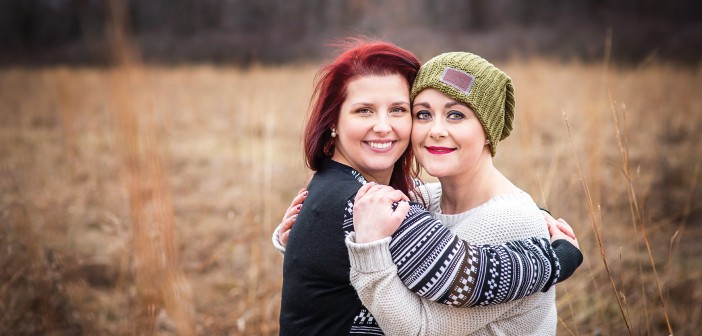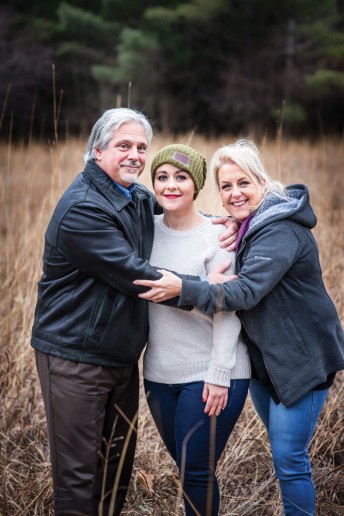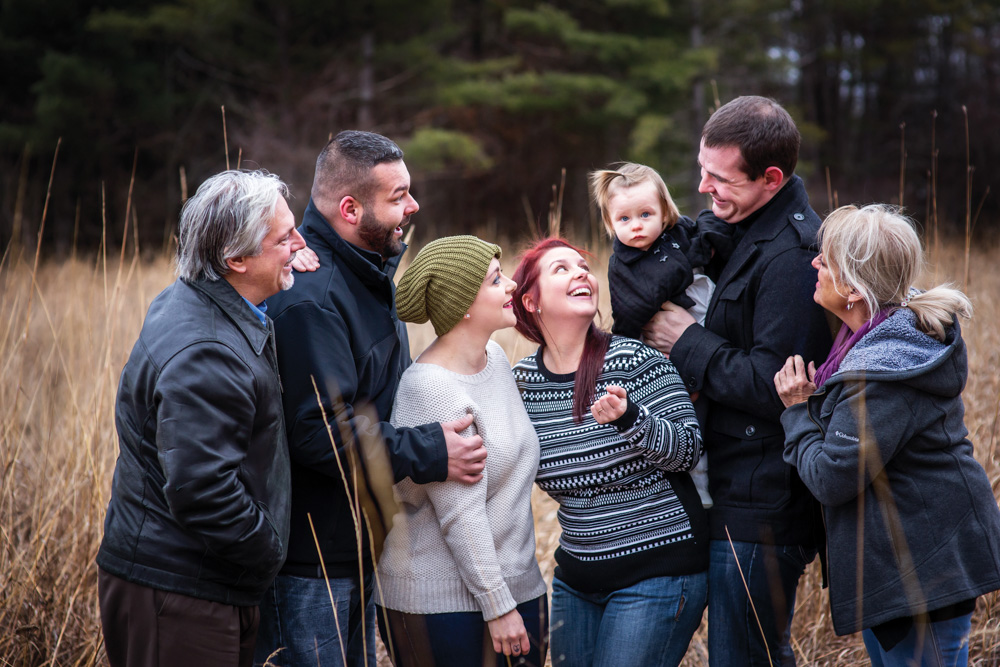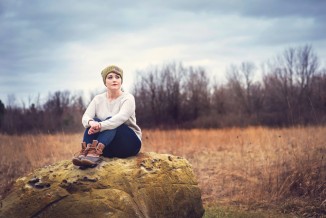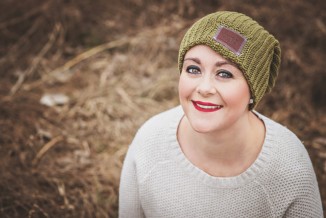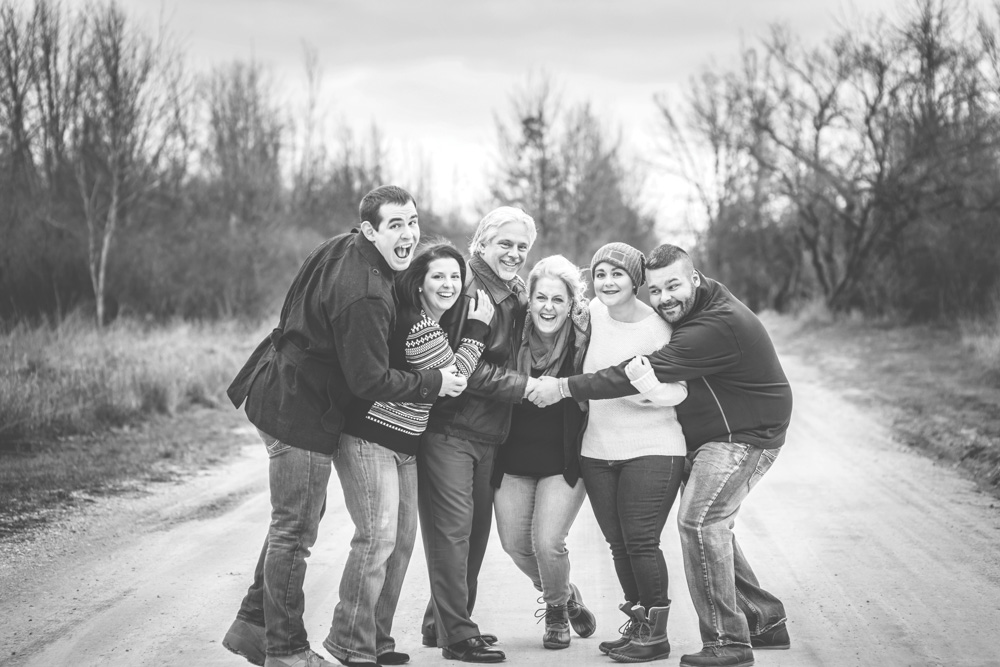Imagine the many choices you can make in life are taken away from you. Do you give up, or do you fight? You fight, of course. When faced with one of the most difficult situations a human being could ever endure – cancer – we should all react the same way: fight it! At least, Mallory Turchi likes to think so.
On October 2 of 2015, Mallory Turchi was diagnosed with Acute Myeloid Leukemia (AML). “Acute” means that it progresses quickly, and “myeloid” refers to the type of cell from which this leukemia starts. AML is the most common type of acute leukemia, occurring when bone marrow begins to make cells that have not yet completely matured. These cells would normally develop into white blood cells; however, with AML, these cells do not develop and are unable to fight infections. With AML, bone marrow may also make abnormal red blood cells and platelets. The number of these abnormal cells increases rapidly, and the leukemia cells begin to push out the normal white and red blood cells and platelets that the body needs.
AML starts in the bone marrow – the soft, inner part where new blood cells are made – and then it slowly makes its way into the blood. Sometimes, it can spread to other parts of the body. Mallory’s doctor told her that she technically had AML nine months to a year before her diagnosis, because unless doctors know what they’re looking for, cancer cells are the same as white blood cells. According to Mallory, one doesn’t know they have AML until the symptoms occur.
“When I was told that I had AML, I panicked,” she admits. “There’s really nothing for it. You either have to figure it out yourself, or you can talk to your doctors; but a lot of the time they can’t give you answers, because it’s not like cancers they remove with surgery. It’s blood cancer. The answer is always, ‘We’ll have to wait and see.’”
And for those who know Mallory, “wait and see” is not an acceptable phrase for such a go-getter. She works at Diplomat Pharmacy as a pharmacy technician, and once or twice a week, she is also a stylist at at Frankie’s Hair Design. “It’s a long day, but I would never imagine not doing it,” she says. “I’ve been doing hair for a little over ten years.”
Before her diagnosis, Mallory was a self-proclaimed workaholic, working two jobs and constantly going from one to the other. “It’s funny,” she continues, “Ever since this happened, they won’t let me work or do anything – I sit at home a lot and I am so bored. Everyone tells me to get a hobby. But I know myself. If I find a hobby, I’ll be bored with it within a week. That’s how I am,” she laughs. “I love doing hair, and I’ll never stop doing that.”
Mallory is part of a big, Italian, loud and hand-gesturing family, and has recently realized what is really important in life. “Before all of this, I always wanted to work and earn more money,” she says. “That doesn’t really even matter to me anymore. To go back to work and feel normal again would be nice; but working just to earn a paycheck … it’s just not something that I think about now.”
There are eight different types of AML, but Mallory found it was difficult to find information on it from people who have already been through it. “If you start reading about it, it’s so overwhelming,” she says. “You get lost in it. Before all of this, I had heard of leukemia, but I didn’t know anyone who had it.”
About a month before she was officially diagnosed, the first symptom Mallory experienced was a couple of bloody noses. She chalked them up to the dry air in her house. Then, she noticed that when she brushed her teeth, her gums bled. She figured she needed a new toothbrush. Next, she had a week of headaches and extreme fatigue. “I kept putting it off, because none of these symptoms felt like reasons to go see a doctor,” she says.
Usually out and about, Mallory had started to spend entire days in bed sleeping. A friend pushed her to see a doctor, and she eventually did. After having some tests, she called the doctor to get the results. “She said something like, ‘I’m not really sure what it is, but it looks like you have leukemia.’ I was in shock,” she says.
Mallory was told she had three days to get her things together and be ready to go to the hospital to begin chemotherapy. “It was a whirlwind,” she says. “The toughest time was those three days they gave me before the treatment. I didn’t have anyone to call and ask what the next steps would be. I wish I had just gone straight to the hospital and not had time to think about it.”
To ease her mind about this transitional process, she posted on Facebook, asking friends if anyone knew someone who had leukemia. “All of my friends were so awesome; they started giving me names of people I could talk to,” she says. She found a Facebook group, “Make It Count,” for people who have had bone marrow transplants.
“Because it was coursing through my whole body, I didn’t have many treatment options,” Mallory says. She immediately started chemotherapy, and then depending on the type that she had, doctors would determine whether or not she needed a bone marrow transplant. “With that type of illness, you’re thrown into it so quickly, all of your choices are taken away,” she says. “I think that was the hardest part.”
Dr. Joyce Fahrner at the Genesys Hurley Cancer Institute has been working with Mallory. After two rounds of chemo with Dr. Fahrner, Mallory was then sent to University of Michigan Hospital in Ann Arbor. The next course of treatment was a bone marrow transplant.
When someone needs a bone marrow transplant, their siblings are always tested first to see if they are a match. Mallory’s brother, Vinnie, and her younger sister, Stephanie, were tested. There is a 25 percent chance of siblings matching, but a 75 percent chance that a stranger will match. “I had it set in my mind that it would be a random donor,” Mallory says.
The day she found out about her match, she and her mother were out to lunch. Even though she was supposed to come to the doctor’s office for the results, they told her over the phone: her sister was a perfect match. “I started crying,” she says. Stephanie was in disbelief. “Of the markers they tested for, I had a ten out of ten, which was really amazing. When I heard, I didn’t really believe it at first. It didn’t really sink in until it was actually happening,” Stephanie says. Mallory’s bone marrow transplant was performed on January 11, 2016.
Although it sounds quite daunting, a bone marrow transplant is a lot like giving blood, according to Mallory. “Everyone assumes it’s something that hurts [for the donor],” Mallory says. A needle inserted into a vein in the donor’s arms sends their blood into a machine. The machine takes the parts of the marrow that are needed, and puts the parts that are not needed back into the donor. The transplant process takes about five hours. “There are a lot of hoops to jump through,” Stephanie admits. The “hoops” include a physical exam, and four days prior to transplant, Stephanie had to give herself injections that boosted all her red and white blood cells and hemoglobin counts, so that after she gave the bone marrow to Mallory, Stephanie’s body would still have a healthy number of cells.
“I thought, if the shoe was on the other foot, God knows she would do it for me,” Stephanie adds. “It was overwhelming, but it’s a wonderful thing. If you can donate to help someone else, go donate. It’s really kind of humbling.”
Additionally, Mallory has a mutated gene – FLT-3, affecting one in three AML patients – which makes the cancer more likely to come back. If it does, they will give her a boost of cells from Stephanie, to help fight it. Stephanie will be able to do it, because she can’t be anyone else’s match now that she is a match with Mallory.
Mallory was scheduled for another bone marrow biopsy at the end of April to determine whether her cancer is still there. If not, she will still be on oral chemo for the next few years. After 100 days, she will have a biopsy every six months to make sure leukemia is gone for good, and no other cancers take its place.
“I wish people could understand it from my perspective,” Mallory says. “Just because I look okay, it doesn’t mean I am. There are still times when I’m definitely struggling.” Mallory’s hope and goal is to one day be the person who people can talk to right after they are diagnosed with AML. During those few days between diagnosis and chemo, she wants to be there – ready and willing to answer any questions a newly diagnosed person might have.
And despite the isolation she felt after her diagnosis, the people in Mallory’s life have stayed by her side. “My mom was there the entire time I was in the hospital, and she always took care of me,” she says. “The people who stick by you while you’re dealing with all of it … those people are the good ones. I wouldn’t say that I should be an inspiration for people … they should be inspired by people like my mom.”
Mallory also has a Facebook group page – #teammal – where she posts facts and updates on what she is going through; her friends post inspiring thoughts on the page, as well. She is also an advocate for the great work that Be the Match does, like sending free kits to your home so you can find out if you are a match for someone who needs a transplant.
Despite all her worries and everything she has gone through, she now has a unique perspective on her situation. “Having this, in a way, sort of makes me happier, because now I can really appreciate things. So, I do kind of feel lucky that it happened to me. Would I have preferred a different way? Yes.” She laughs. “I get to be thankful for more things. Just to be able to walk outside, drive my car, smell the air; I don’t take the tiny things for granted.”
Source: American Cancer Society
Photography by Kayla Renee Photography

